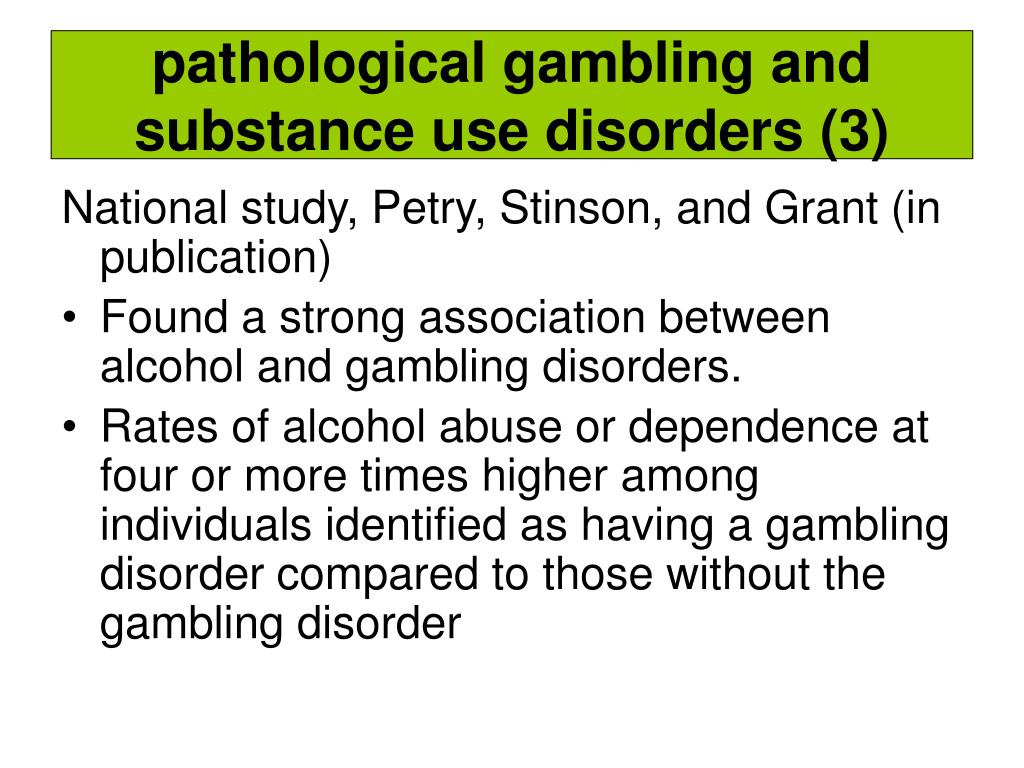

- PHARMACOLOGICAL TREATMENTS IN PATHOLOGICAL GAMBLING UPDATE
- PHARMACOLOGICAL TREATMENTS IN PATHOLOGICAL GAMBLING TRIAL

Several patients were dropped because of adverse experiences. Four subjects (50%) abstained from gambling during their final month of study participation. Seven of the eight subjects with post-baseline assessment (88%) were considered responders (i.e., achieved & amp amp amp amp amp amp amp amp amp amp amp amp amp quot much& amp amp amp amp amp amp amp amp amp amp amp amp amp quot or & amp amp amp amp amp amp amp amp amp amp amp amp amp quot very much& amp amp amp amp amp amp amp amp amp amp amp amp amp quot improvement on the CGI).

Significant improvement was found on the YBOCS-PG (P& amp amp amp amp amp amp amp amp amp amp amp amp amp lt. Eight subjects (6 men, 2 women) had at least one post-baseline visit, and five subjects (63%) completed the protocol. The primary efficacy measure was the Yale-Brown Obsessive-Compulsive Scale modified for PG (YBOCS-PG). Subjects were evaluated at baseline and at one week intervals during a four week titration period, and every two weeks thereafter for assessment of gambling behavior, mood, and adverse experiences.
PHARMACOLOGICAL TREATMENTS IN PATHOLOGICAL GAMBLING TRIAL
Non-depressed outpatients with DSM-IV PG received flexibly dosed extended release carbamazepine in a prospective 10-week open-label trial following a two-week observation period. Neuropsychopharmacology Pathological Gambling Psychopharmacology Treatment.The efficacy and tolerability of extended release carbamazepine was tested in the treatment of pathological gambling (PG). These findings in conjunction with our prior publication provide a comprehensive overview of controlled investigations and exploratory reports of pharmacotherapies for PG. This resulted in 24 case studies and/or RCTs not previously included in our original review article. As such, our search did not exclude any studies due to age of material, but with a few exceptions, the majority of the studies discussed were published later than 2000. The study of pathological gambling is relatively new. Results not directly related to the treatment of pathological gambling were not included. In order to focus in on the search modalities, we searched within the initial results for specific phrases such as "psychopharmacology, clinical trial, medication, serotonergic, dopaminergic, etc." in addition to searching for specific medications. For example, using just "pathological gambling treatment" results in over 1600 hits. A PubMed search was conducted using terms such as "pathological gambling treatment", "clinical trials and gambling", and "gambling psychopharmacology." Using these search terms, numerous results were obtained, necessitating further search modifiers. Our original manuscript did not describe in detail findings from case studies or open-label studies so in addition to the new RCT data and a new case report involving naltrexone, here we describe case and open-label findings. In the past year and half since this publication was prepared, there has been one additional randomized clinical trial (RCT) published along with a single case study. These systems represent potential targets for psychopharmacological treatments for PG, with opioid antagonists arguably showing the most consistent benefit in RCTs. In the prior manuscript, we described how cortico-limbic circuitry and neurotransmitter systems (norepinephrine, serotonin, dopamine, opioids, glutamate, and gamma-aminobutyric acid (GABA)) have been implicated in PG.
PHARMACOLOGICAL TREATMENTS IN PATHOLOGICAL GAMBLING UPDATE
This is an update to a previously published article discussing the neuropsychopharmacology of pathological gambling (PG) (1).


 0 kommentar(er)
0 kommentar(er)
